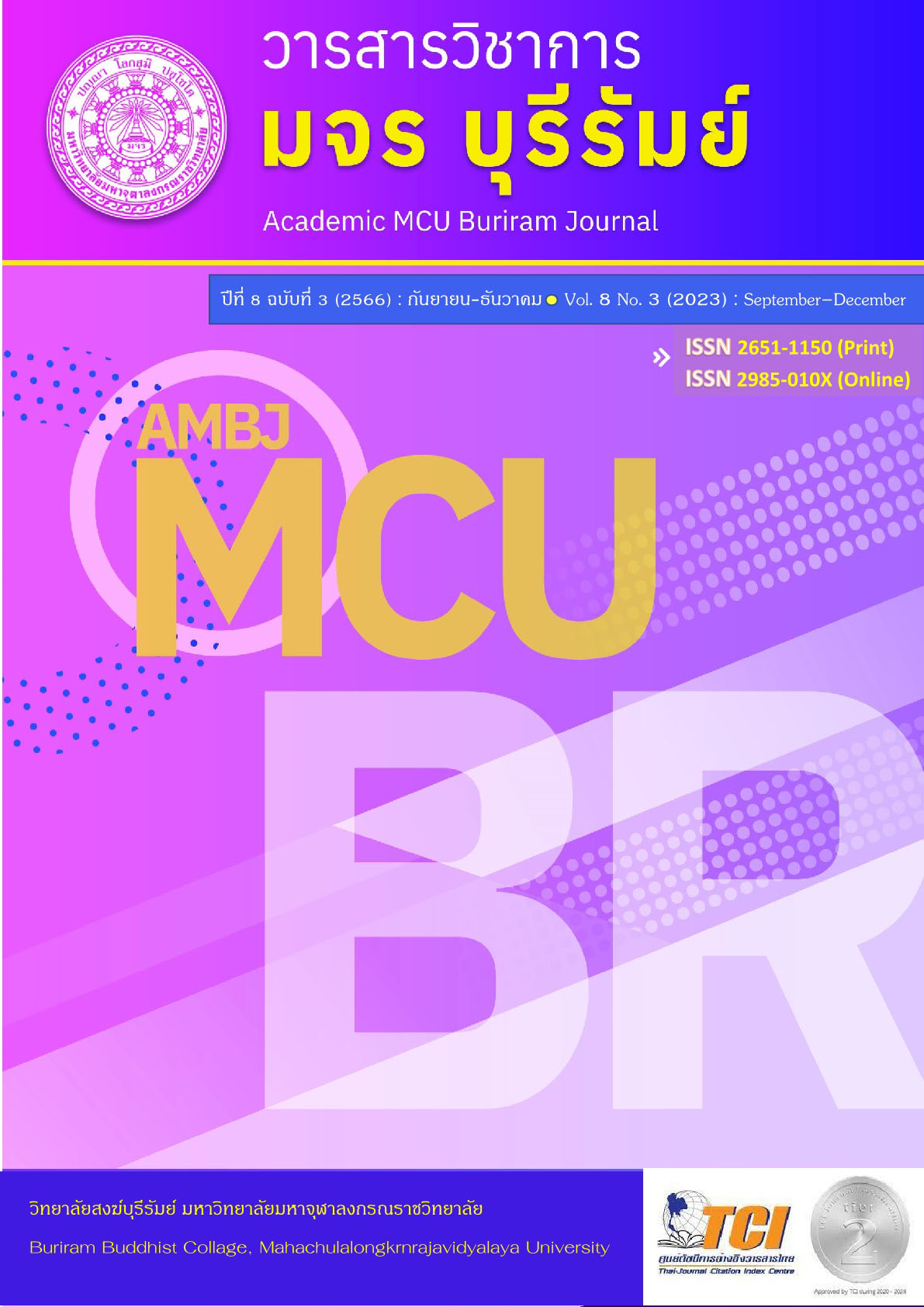An Analyical study of Mindfulness of Death of according to Theravada Buddhism
Keywords:
Mindfulness of DeathAbstract
The purpose of this research were: 1) To study of mindfulness in Theravada Buddhism, 2) To study of of mindfulness Death According in Theravada Buddhism. and 3) A study Analycal of mindfulness of Death according in Theravada Buddhism.
The research results found that:
1. Death according to Theravada Buddhism It is the adherence to the Suttanta Piṭaka 5 supplications, which is death or death that no one can escape. The body is broken and extinguished, which is the truth of life. And the Abhidhamma Pitaka is the death that is a factor. The birth of life is the birth of suffering. The principle of death in the holy scriptures Death related to wisdom is the use of wisdom to consider the death that will happen to oneself and others. Death in the Holy Scriptures is to take mindfulness to remember death Lack of life that is lost due to various factors, the growth of death according to Theravada Buddhism principles. Makes the mind concentrate quickly.
2. The development of death according to the principles of Theravada Buddhism the practice of death to contemplate or remember death must consist of having faith. With perseverance, with patience, with wisdom, the virtue of the development of death or meditation is attaining Nirvana, attaining Apinya, the development of four Brahmaviharas, the development of four meditations, and the development of physical and mental health. Death corresponds to meditation 4 for the remembrance of death. In the Holy Scriptures Explains the practice of meditation to prevent damage. It is the existence of the Ten Appanakosalas and the purpose of the Vimuttimagga Scripture. is to live happily in the present to enjoy every emotion with introspection acquiring supernatural powers and attainment.
3. An analysis of the development of death according to Theravada Buddhism principles (1) The development of death for precaution by using mindfulness to consider the four noble ones in standing, walking, sitting and lying down and it is a Dhamma practice through contemplation with wisdom. singleness According to the hierarchy of Jhana 1, Jhana 2, Jhana 3, and Jhana 4 (4) The development of death for knowledge when practice is complete. will be able to induce concentration in the present is to have consciousness Recalling the moment of emotion concentrate on controlling both the body and the mind, and which is the way of the Buddha There are the 8 Noble Paths which are the 8 Noble Paths: Right View, Right Sangkappa, Right Speech, Right Kammanta, Right Livelihood, Right Waya, Right Mindfulness and Right Samadhi.
References
จำลอง ดิษยวณิช. (2549). วิปัสสนากรรมฐานและเชาวน์อารมณ์. เชียงใหม่: พิมพ์ที่โรงพิมพ์แสงศิลป์.
พระปลัดวิสุทธิ์ คุตฺตชโย. (ม.ป.ป.). คู่มือการเรียนการสอนปริจเฉทที่ 8, 9 (ชั้นมัชฌิมอาภิธรรมมิกะโท).
พระมหาบุญก์หนา อภิปุญฺโญ (บุญศักดิ์). (2548). การศึกษาเปรียบเทียบเรื่องสมาธิในคัมภีร์วิสุทธิมรรคกับคัมภีร์วิมุตติมรรค. วิทยานิพนธ์ศาสนศาสตรมหาบัณฑิต. บัณฑิตวิทยาลัย: มหาวิทยาลัยมหามกุฏราชวิทยาลัย.
พระมหามงคล สิริมงฺคโล (นิยมเหมาะ). (2551). การศึกษาเชิงวิเคราะห์เรื่องมรณานุสติตามแนวพุทธปรัชญาเถรวาท. วิทยานิพนธ์ศาสนศาตรมหาบัณฑิต. บัณฑิตวิทยาลัย: มหาวิทยาลัยมหามกุฎราชวิทยาลัย.
พระอุปติสสเถระ. (2557). วิมุตติมรรค. พระพรหมบัณฑิต (ประยูร ธมฺมจิตฺโต) แปลจากฉบับภาษาอังกฤษ. พิมพ์ครั้งที่ 9. กรุงเทพมหานคร: สยามปริทัศน์.
มหาจุฬาลงกรณราชวิทยาลัย. (2539). พระไตรปิฎกภาษาไทย ฉบับมหาจุฬาลงกรณราชวิทยาลัย. กรุงเทพมหานคร: โรงพิมพ์มหาจุฬาลงกรณราชวิทยาลัย.
มหาวงศ์ ชาญบาลี. (2523). วิสุทธิมรรค. กรุงเทพมหานคร: ธรรมบรรณาคาร.
Downloads
Published
How to Cite
Issue
Section
License
Copyright (c) 2023 Academic MCU Buriram Journal

This work is licensed under a Creative Commons Attribution-NonCommercial-NoDerivatives 4.0 International License.
ทัศนะและความคิดเห็นที่ปรากฏในบทความวารสารฉบับนี้ถือเป็นความรับผิดชอบของผู้เขียนบทความนั้น ไม่ถือเป็นทัศนะและความรับผิดชอบของบรรณาธิการ





